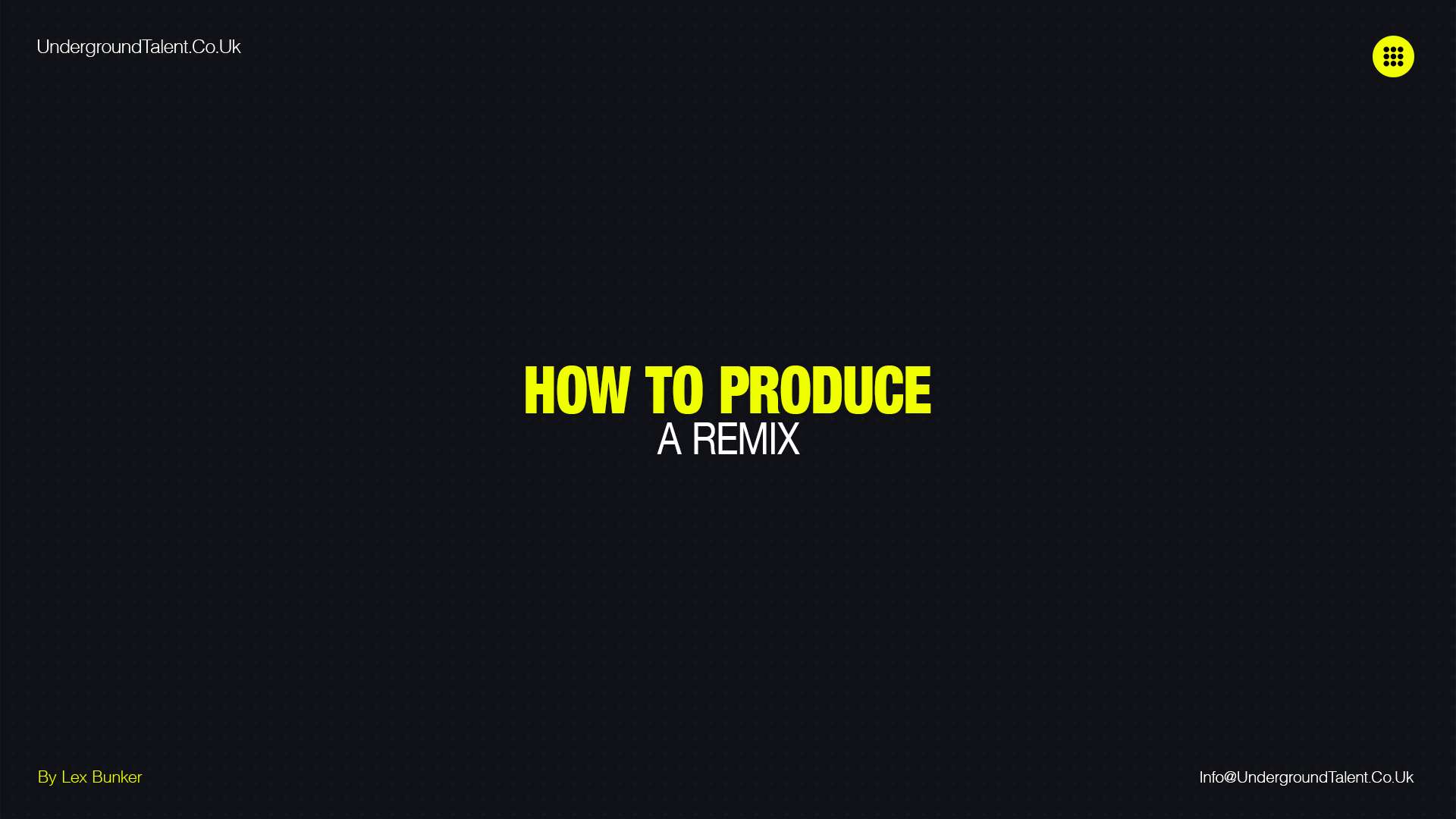Creating a techno remix is an exciting way to put your spin on existing music. Whether you’re a beginner or have some experience, this guide will help you understand the basics and take your remixing skills to the next level. Techno music is all about creativity and rhythm, and with the right techniques and tools, you can produce a remix that stands out.
Key Takeaways for Techno Remix Production
- Understand the core elements of a techno remix, including rhythm, melody, and effects.
- Choose the right software that fits your needs and is compatible with your platform.
- Experiment with sound design techniques like layering, mixing, and using effects to create unique sounds.
- Structure your remix thoughtfully to keep the listener engaged from start to finish.
- Focus on mastering and final touches to ensure your remix sounds polished and professional.
Table of Contents
- Understanding the Basics
- Choosing the Right Software
- Exploring Sound Design Techniques
- Structuring Your Remix
- Mastering and Final Touches
- Promoting Your Remix
- Conclusion
- Frequently Asked Questions
Understanding the Basics of Techno Remix
What is a Techno Remix?
A techno remix is a reimagined version of an original track, often with a faster tempo and more electronic elements. It’s about taking the core of a song and giving it a new, energetic twist. This can involve changing the beat, adding new sounds, or even altering the song’s structure.
Key Elements of a Techno Remix
To create a compelling techno remix, you need to focus on several key elements:
- Beat Matching: Ensuring the beats of the original and remixed tracks align perfectly.
- Harmonic Mixing: Blending tracks in the same key to maintain musical harmony.
- Transitions: Smoothly moving from one part of the track to another.
- Sound Design: Crafting unique sounds that stand out.
Importance of Originality
Originality is crucial in remixing. While it’s important to respect the original track, adding your unique touch is what makes a remix stand out. This could be through innovative sound design, unexpected transitions, or creative use of effects. Remember, mastering the basics like beat matching and harmonic mixing lays the foundation for more advanced techniques.
Choosing the Right Software for Your Techno Remix
Popular Software for Remixing
When starting with techno music production, selecting the right software is crucial. Digital Audio Workstations (DAWs) are the backbone of any remix project. Some popular choices include:
- Ableton Live
- FL Studio
- Logic Pro
- Cubase
- Reason
Each of these has unique features that cater to different needs and preferences.
Features to Look for in Remixing Software
When choosing a DAW, consider the following features:
- User-friendly interface
- High-quality audio processing
- Extensive library of sounds and samples
- Compatibility with third-party plugins
- Robust support and community
These features ensure that you have the tools needed to create professional-sounding remixes.
Compatibility with Different Platforms
It’s important to choose software that works well with your computer’s operating system. Most DAWs are compatible with both Windows and macOS, but some are exclusive to one platform. For instance, Logic Pro is only available on macOS. Make sure to check the system requirements before making a decision.
Choosing the right software can make or break your remixing experience. Take the time to explore different options and find the one that best suits your needs.
Exploring Sound Design Techniques for Techno Remix
Layering and Mixing Sounds
Layering different sounds is essential for creating a rich and full techno track. Experiment with combining various elements like basslines, synths, and percussion to achieve a unique texture. Pay attention to the balance and ensure each layer complements the others without overpowering them.
Creating Unique Rhythms
Rhythm is the backbone of any techno track. Focus on developing intricate and captivating rhythms that keep the listener engaged. Use a mix of traditional drum patterns and unconventional sounds to add variety and interest.
Utilising Effects and Philtres
Effects and philtres can transform a simple sound into something extraordinary. Explore techniques like EQ, reverb, and delay to add depth and dimension to your tracks. Don’t be afraid to experiment with automation to create evolving and dynamic soundscapes.
Remember, the key to a great techno remix is to keep experimenting and pushing the boundaries of sound design.
Structuring Your Techno Remix
Arranging Sections for Impact
When structuring your remix, think about the purpose of the remix. Is it to get you noticed so you can get more gigs or remixes? Or perhaps to get labels to take notice of your original productions? Your track needs to reflect that. Whether you’re remixing for fun or aiming for a professional release, following these steps will help you craft compelling remixes that showcase your unique style.
Building Transitions and Breakdowns
Transitions are crucial in dance music. The beat can’t stop or fade to silence between songs. This is your opportunity to take the lead and get creative. Use effects and a bit of improvisation while your vocalist bottles down some water and gets ready for their next part. By mastering these techniques, you can effectively learn how to remix a song and produce a compelling new version that stands out.
Adding Variation and Dynamics
Remixes often involve altering the tempo, changing the instrumentation, or adding new parts. They can be subtle tweaks on the original, or take the track in a whole new direction, making it appealing to different audiences and fitting various contexts, such as clubs, radio, or playlists.
Mastering and Final Touches for Techno
Balancing Levels and Frequencies
Mastering is the final step in your journey to create a polished techno remix. Make sure to address any issues with balance, EQ, dynamics, and stereo imaging to ensure that your mix is as clean and cohesive as possible. This stage is not for minor adjustments but for broad strokes that enhance the overall clarity, punch, and energy of your track.
Applying Compression and EQ
Compression and EQ are essential tools for mastering. They help in tightening up transitions, removing unnecessary elements, and making final synth and effect tweaks. Use these tools to add subtle colouration and character to your master. Try using saturation, harmonic exciters, and analogue emulations to add warmth, depth, and dimension to your mix.
Enhancing the Overall Sound Quality
To ensure your track sounds professional and ready for the dancefloor, focus on enhancing its overall sound quality. This includes a full mixdown, addressing volume levels, and applying a master. Test your track with a limiter to see how it sounds with a decent amount of loudness. Remember, mastering is a bit of a dark art, but with practice, you can get your remix to sound just right.
Mastering is the last step in your journey towards learning how to make a techno beat. This final polish will ensure your tracks sound polished, professional, and ready to dominate the dancefloor.
Promoting Your Techno Remix
Sharing on Online Platforms
Once your remix is ready, it’s time to share it with the world. Think about the purpose of the remix: is it to get you noticed for more gigs or remixes? Or perhaps to catch the attention of labels? Your track should reflect that goal. Be cautious if it’s a bootleg remix made from a stereo file of the original; playing it in clubs is fine, but posting it online might attract unwanted attention. Avoid selling it on platforms like Apple Music or Beatport to stay within legal boundaries.
Engaging with the Remix Community
Whether you’re remixing for fun or aiming for a professional release, engaging with the remix community can be incredibly beneficial. Participate in remix competitions and share your work on forums and social media groups. This not only helps you get feedback but also increases your visibility. Happy remixing!
Collaborating with Artists and Labels
If your remix is for a label or artist’s release, they usually handle the distribution. Sit back and watch your DMs fill with messages from fans while someone else does the hard work. If it’s an independent project, consider reaching out to artists and labels for potential collaborations. This can open doors to new opportunities and help you grow as a remixer.
Conclusion to Techno Remix
Creating a techno remix is an exciting journey that blends creativity with technical know-how. By understanding the basics of remixing, selecting the right tools, and experimenting with different sounds, you can craft a unique track that stands out. Remember, the key to a great remix is to balance your original ideas with elements of the original song. So, dive in, have fun, and let your creativity flow. Happy remixing!
Frequently Asked Questions on Techno Remix
What is a techno remix?
A techno remix is a new version of an original song, where the music is altered to give it a techno feel. This can involve changing the beats, adding electronic sounds, and rearranging parts of the song.
Do I need special software to create a techno remix?
Yes, you’ll need music production software, also known as a Digital Audio Workstation (DAW). Popular choices include Ableton Live, FL Studio, and Logic Pro.
Can I use any song for a remix?
You can remix any song, but it’s important to get permission from the original artist or rights holder if you plan to share or sell your remix.
How do I make my remix sound unique?
To make your remix unique, try adding your sounds, changing the rhythm, and using effects like reverb and delay. Creativity is key!
Is it hard to learn how to remix songs?
Learning to remix songs can be challenging at first, but with practice and the right tools, it becomes easier. There are many tutorials and courses available to help you improve.
Where can I share my techno remix?
You can share your remix on platforms like SoundCloud, YouTube, and Bandcamp. Engaging with the remix community on social media can also help you gain listeners.
Additional Resources
- Mixing Electronic Music: Fundamentals and Objectives
Electronic Music Promotion – Unlock Massive Growth with Hypeddit
Producing Techno? Get Your Free Sample Packs.
Dive into electronic music production with our newly released “Free Techno Tools V1” and “Free Techno Tools V2” sample packs. These packs are full of high-quality sounds that will add a professional touch to your tracks. If you’re looking to expand your sound library, these free sample packs are perfect for every techno fanatic. Click on the links below to access these fantastic resources and elevate your production game today!
Connect With Us.
Join our vibrant community for more wisdom and updates:
And Always Remember…
Have Fun & Be Creative!





